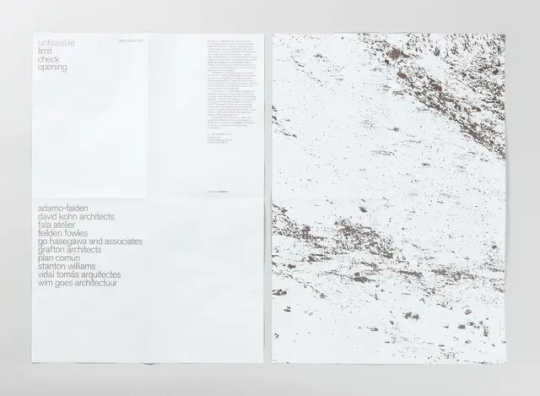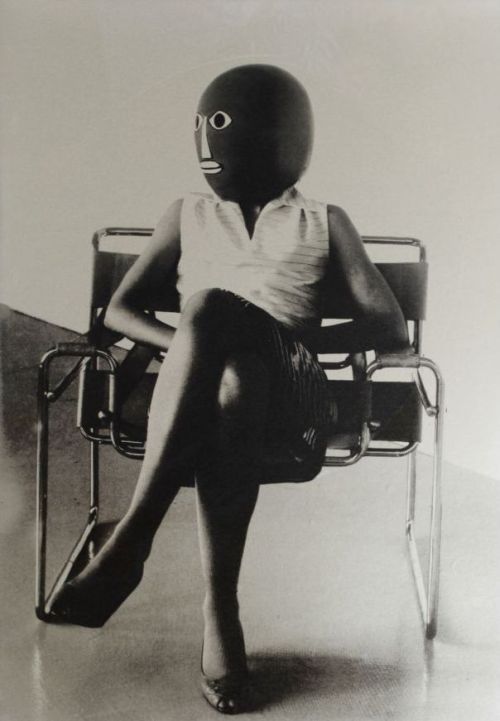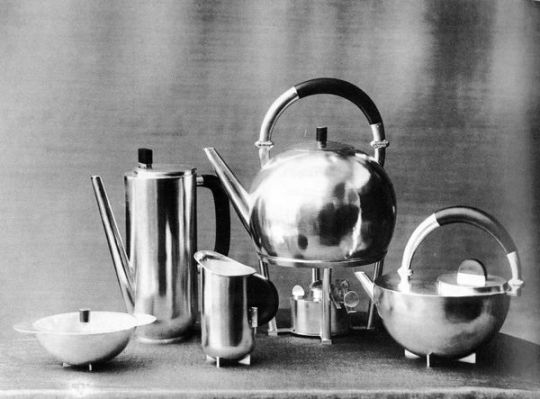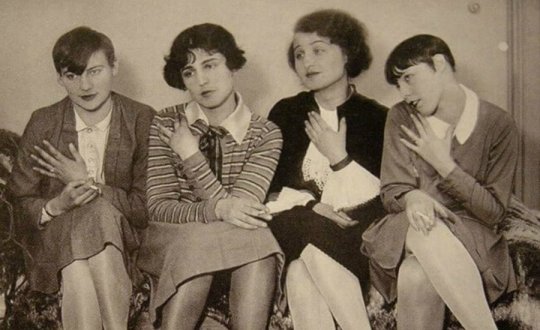#walter knoll london
Photo

Systems Studio / Walter Knoll / Unfeasible / Poster / 2015
154 notes
·
View notes
Text

Neubau / Das Programm / Walter Knoll London / Less But Braun / Colour As System / Poster / 2013
0 notes
Photo

by
Neubau (NB) / Das Programm / Walter Knoll London / Systems / Less But Bigger / Poster / 2013
1 note
·
View note
Photo

Neubau (NB) / Das Programm / Walter Knoll London / Systems /... https://ift.tt/37TyKNL -> Telegram Design Bot
16 notes
·
View notes
Photo

Neubau, poster from the series 'Typography as System', for 'systems', Exhibition curated by das programm, Produced in association with Braun, Walter Knoll London showroom, London, November 25 – December 31, 2013
76 notes
·
View notes
Text
Pioneer Architects XII
Pioneer Architects is at the hundred anniversary of the Bauhaus dedicated to all women architects and educators who became role models with their pioneer work influenced by the movement.

Research in development of universal type by Herbert Bayer (1927). | Photo via Harvard Art Museums; Busch-Reisinger Museum
According to Walter Gropius Bauhaus school need to be open to “any person of good repute, regardless of age or sex.” In this time women couldn’t receive a public education in many fields, so he meant this with good intentions.

Unknown student in Marcel Breuer Chair. | Photo by Ursula Mayer
Bauhaus school was creating a nucleus of interdisciplinary innovation, which combined craft and design. Rather than utilizing the traditional model of teacher student relations, Bauhaus fostered community as the foundation of learning. Part of this ideology was also the integration of women artists in this community.

But Gropius also believed that men and women’s brains operated differently, men had the capacity to think in three dimensions while women not. Therefore many of women artists of the Bauhaus movement stuck to practices commonly regarded as women’s work, textiles and weaving. Men, on the other hand, become architects, sculptors and painters.

Otti Berger was a textile artist and weaver. | Photo by Julia Moholy-Nagy (1927)
A core member of the experimental approach to textiles, Otti Berger, experimented with methodology and materials during the course of her studies at the Bauhaus to eventually include plastic textiles intended for mass production. Along with Anni Albers and Gunta Stözl, Berger pushed back against the understanding of textiles as a feminine craft and utilized rhetoric used in photography and painting to describe her work. During her time in Dessau, she also wrote a treatise on fabrics and the methodology of textile production, which stayed with Gropius and was never published. Berger is the only designer from Bauhaus who sought patents for her textiles and became a deputy to designer Lilly Reich in the textile workshop at Bauhaus.

Otti Berger and Atelier Dessau by Lotte Beese (1930). | Photo Jeanine Fiedler
Not allowed to work in Germany under Nazi rule because of her Jewish roots, Berger closed her company down in 1936 and fled to London, where attempts to emigrate to United States to work with her fiancee Ludwig Hilberseimer and other Bauhaus professors failed.

Otti Berger’s Tactile Board (1928). | Image © Bauhaus-Archiv Berlin
One of the first women who join the Bauhaus Department of Architecture in 1927 and the first to study with Hannes Meyer and Hans Wittwer was german architect and urban planner Lotte Stam-Beese. She worked on the reconstruction of Rotterdam after World War II.


Lotte Beese built Pendrecht, the first car-free street in Rotterdam as well the Netherlands (1947). | Photo via Architectureguide
After the second World War the influence of Bauhaus developed in the US. One of the pioneering designer and entrepreneur who created the modern look of America’s postwar corporate office was Florence Knoll Bassett. She studied under Ludwig Mies van der Rohe, Eliel Saarinen and worked with leaders of Bauhaus, including Walter Gropius, Marcel Breuer, and Wallace K. Harrison.

Florence Knoll promoted the Modernist merger of architecture, art and utility in her furnishings and interiors, especially for offices. | Photo © Knoll Archive

The Hairpin Stacking Stool designed by Florence Knoll. | Photo © Knoll Archive
The influences of Carl Koch, Walter Gropius and Ludwig Mies Van Der Rohe are evident in many of Gertrude Kerbis's designs. In 1954 she received her master degree from the Illinois Institute of Technology in Chicago under Ludwig Mies van der Rohe and Walter Peterhans.

Gertrude Kerbis was a couple of decades ahead of her time; a woman in a sea of men wearing white shirts and ties. | Photo via Vimeo
Kerbis began her career when women at architecture firms were receptionists or secretaries. To change that she founded the Chicago Women in Architecture in 1973. She played a leading role in designing several major examples of American modernism, including the Lustron houses, the US Air Force Academy and the O'Hare International Airport Rotunda.

The dining hall’s interior of US Air Force Academy was column-free with a roof of steel trusses supported by sixteen columns. | Photo via Docomomo
Marianne Brandt, a strong and independent New Woman of the Bauhaus, was one of few women who distanced herself from the fields considered more feminine at the time such as weaving or pottery.

Brandt's designs for metal ashtrays, tea and coffee services, lamps and other household objects are now recognized as among the best of the Weimar and Dessau Bauhaus. Further, they were among the few Bauhaus designs to be mass-produced during the interwar period, and several of them are currently available as reproductions.

Coffee and tea set by Marianne Brandt (1924). | Photo by Lucia Moholy

The modern women Alexa von Porewski, Lena Amsel, Rut Landshoff, unknown before 1929. | Photo by Umbo and Paul Citroen, Berlinische Galerie.
167 notes
·
View notes
Photo

searchsystem: Playgroup / Das Programm / Walter Knoll London /... typophile
12 notes
·
View notes
Photo




Systems exhibition, held at the Walter Knoll showroom in London featuring a curated selection of Braun products from the Rams' era, accompanied by a selection of commissioned posters. Design by Lundgren+Lindqvist.
#print#design#poster#graphic design#typography#illustration#product#braun#dieter rams#Gothenburg#Sweden
46 notes
·
View notes
Photo

Lundgren+Lindqvist / Das Programm / Walter Knoll London / Systems / Poster / 2013
#searchsystems#walter knoll#poster design#systems#das programm#graphic design#cover design#book design#layout design
0 notes
Photo

Neubau (NB) / Das Programm / Walter Knoll London / Systems / Form as System / Braun 121 (B121) / Poster / 2013
#neubau#nb#das programm#walter knoll london#systems#form as system#braun 121#b121#poster#2013#braun#illustration#product#typography
22 notes
·
View notes
Text
A case of two forgeries
One of the interesting, but occasionally challenging, aspects of cataloging rare books is learning when not to take the printed publication information at face value. There are several reasons why an imprint might be false – perhaps the piece is a pirated edition or, as is often the case with political or religious pamphlets, the printer has printed under a pseudonym or falsified (or simply made-up) the place of printing/publication in order to avoid censorship. Rare book forgeries, on the other hand, attempt to pass themselves off as ‘the real deal’ in order to entice would-be-buyers into bidding on ‘rare’ items. While forgeries encountered by book collectors “ … [are] mainly confined … to autograph manuscripts, letters and documents, to inscriptions or annotations in books, and similar written, as opposed to printed, matter …” (ABC for book collectors) a quick glance at the category “Literary forgeries” in Wikipedia provides more than a few entries on printed works that attempted to pass themselves off as authentic. Here we will take a short look at two forged editions of poems by George Eliot produced in the late 19th century.

The most notorious forger of the late 19th/early 20th centuries was Thomas J. Wise. Wise was a noted book collector and bibliographer who published numerous bibliographies including those of the works of Tennyson, Swinburne, Wordsworth, and Percy Bysshe Shelley. He parlayed his reputation as an eminent bibliographer of English authors and penchant for exposing fakes into the printing and sale of his own forgeries. Wise, along with his co-conspirator, H. Buxton Forman, a fellow bibliographer and antiquarian bookseller known for his editions and bibliographies of Shelley and Keats, used their literary connections and reputations to produce ‘previously unknown’ and exceedingly ‘scarce’ copies of works by eminent authors. Between 1887 and 1903 numerous forgeries of some of the leading names in English literature (Shelley, Browning, Ruskin, Swinburne, Gosse, Morris, etc.) were produced. The publication of An enquiry into the nature of certain nineteenth century pamphlets (1934) by John Carter and Graham Pollard exposed the fraud (though the initial publication did not explicitly blame Wise) and compiled a bibliography of titles they had determined to be forgeries. Further studies have resulted in the identification of “401 publications now attributed to Wise, 29 others in which he appears to be somewhat involved, 23 suppressed or abortive issues, and some … variants, proof-copies and other miscellanea” (Todd, William B. “A hand-list of Thomas J. Wise, in Thomas J. Wise, centenary studies).

There are several known Wise forgeries in our Rare Books Collection including these recently cataloged pamphlets that were added to the collection as part of the Gerald N. Wachs Collection of Nineteenth Century English Poetry. The first, an edition of the poem Brother and sister by George Eliot, has an imprint that states that it was printed in London for private circulation in 1869. At first glance (to a non-Eliot scholar) nothing appears out of the ordinary, however a little research reveals that the poem first appeared in print in The legend of Jubal in 1874 and was never issued individually prior to the 1874 printing. Carter and Pollard’s examination of this pamphlet revealed that the type used was not made for the printer, Richard Clay and Sons, until after 1880 and the paper on which it was printed was likely not made before 1883. The actual production of this pamphlet is generally given as 1888, which also happened to be the same year the British Museum purchased their copy.
“… George Eliot’s Brother and Sister 1869 … was sold to the British Museum for three guineas in October 1888 … it was catalogued with the note ‘From ‘The legend of Jubal and other poems’ 1874 in which the Sonnets perhaps really first appeared’. The note was later removed from the British Museum catalogue on the ground the Mr Wise believed it to be quite unfounded, and the same authority was gaily assuring a fellow collector in 1896 ‘It is generally understood, and I think rightly, that twenty-five copies of ‘Brother and Sister’ were printed’ …” (Collins, p. 91)
Curiously, another forgery of this poem exists that seems to have been produced in the United States sometime between 1888 and 1920 and is identical to the Wise forgery except for the variation in design on the front cover (fleur-de-lis at the corners instead of interlaced rules) and without the single line rule at the end of the text.

PR466.B7 1889 ; PR4666.B7 1888b
The second pamphlet, Eliot’s Agatha, is a forgery of a real 1869 edition published by Trübner & Co. There are numerous textual differences including the following: page 5, line 22 “garden-gate” instead of “garden gate”, no comma after words “door” and “Agatha” (page 5, lines 24 and 27 respectively), presence of comma after “behind” (page 11, line 16), page 13, line 17 “thing” instead of “things”. A third edition of this pamphlet exists that was produced in the United States around 1920. This edition can be distinguished from the Wise edition by the following: with “Hall]” instead of “Hall.]” on title page verso, page 3, line 11 “Pine woods” instead of “Pine-woods” and without comma after “thinking” on page 11, line 27 (see the pictures below to compare the Wise edition with the U.S. edition) A full list of the differences between all 3 editions can be found in Parrish, M.L. Victorian lady novelists on pages 24-25, though he described the copies as variant states as his publication predates Carter and Pollard’s Enquiry.

PR4666.A7 1889 ; PR4666.A7 1920
The first instance of differentiation between the first edition and the Wise edition comes from Wise himself in 1922 in the Ashley Library in an attempt to prove that the forgery is in fact a true second edition:
“Agatha was seen through the press upon behalf of the authoress by Mr. Buxton Forman. Of the first edition only twenty copies were printed. These, however, proved to be insufficient to meet the demands of her friends who clamoured for them, and a second batch of fifty copies were ordered ... Mr. Forman claimed that these later copies were a ‘second issue of the first edition’; but as the types from which they were printed were reset, they undoubtedly form a second edition of the poem.” (Quoted in Carter & Pollard)
Carter and Pollard laid out their reasons for finding Wise’s argument unconvincing: 1) the paper it is printed was probably not produced as early as 1869; 2) there was no mention of Eliot’s friends ‘clamouring’ for copies in the 3 volume biography by her husband John Walter Cross; 3) Mr. Wise was in possession of 21 of the 50 copies of the ‘second edition’ as late as 1912; 4) there were 2 copies of Agatha in the sales of the Buxton Forman collection, both were the ‘second edition’ but were sold as a ‘rare first edition’ Lastly, they note that the type in which the ‘second edition’ was printed was of the same fount as six proved forgeries. Given all this evidence however, they did not go so far as to label this pamphlet a forgery, simply “highly suspicious.” The date assigned to the Wise Agatha is generally given as 1889, due to its association with Brother and Sister in the Libbie sale on 4 December 1889.


Sources:
Carter, John and Nicholas Barker. ABC for book collectors. New Castle, DE : Oak Knoll Press ; London : British Library, 2004.
Carter, John and Graham Pollard. An enquiry into the nature of certain nineteenth century pamphlets. London : Constable & Co. ; New York : Charles Scribner’s Sons, 1934.
Collins, John. Two forgers: a biography of Harry Buxton Forman & Thomas James Wise. New Castle : Oak Knoll Books, 1992.
Parrish, M.L. Victorian lady novelists. London : Constable and Company limited, 1933.
Thomas J. Wise, centenary studies. Austin : University of Austin Press, 1959.
(Portraits of Wise and Forman in the public domain)
11 notes
·
View notes
Photo

by
Neubau (NB) / Das Programm / Walter Knoll London / Systems / Less But Bigger / Poster / 2013
0 notes
Photo

Lundgren+Lindqvist / Das Programm / Walter Knoll London /... https://ift.tt/31A3iQ7 Telegram Design Bot > https://t.me/gdesignbot
16 notes
·
View notes
Photo

Dieter Rams, May 20, 1932 / 2020
(image: Neubau, poster from the series 'Typography as System', for 'systems', Exhibition curated by das programm, Produced in association with Braun, Walter Knoll London showroom, London, November 25 – December 31, 2013)
#graphic design#typography#design#exhibition#poster#dieter rams#birthday anniversary#neubau#braun#walter knoll#1930s#2010s#2020s
46 notes
·
View notes

